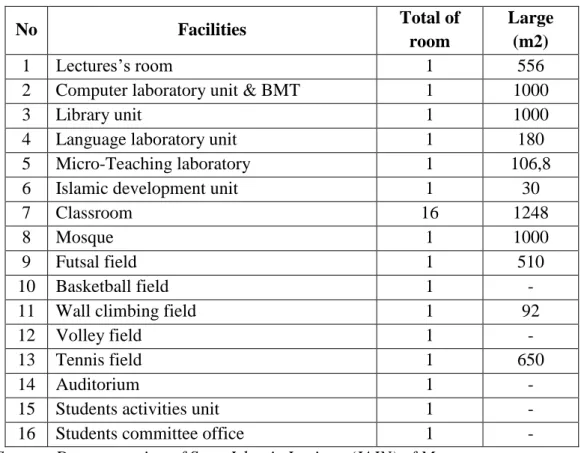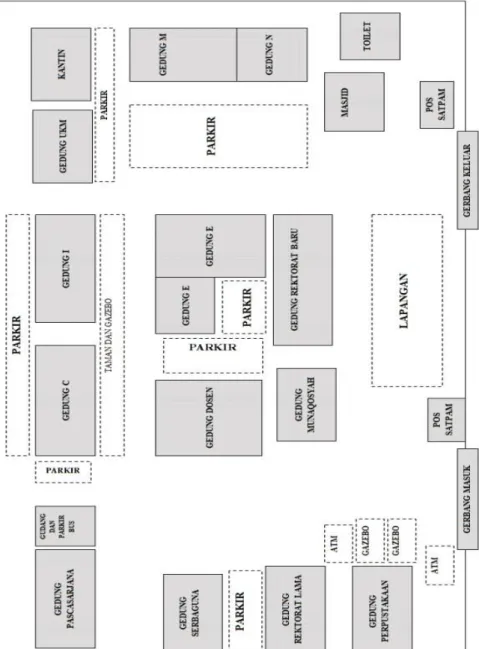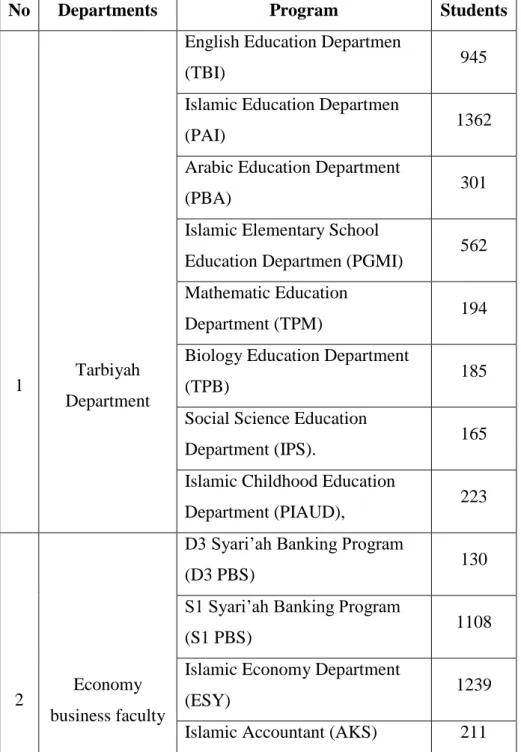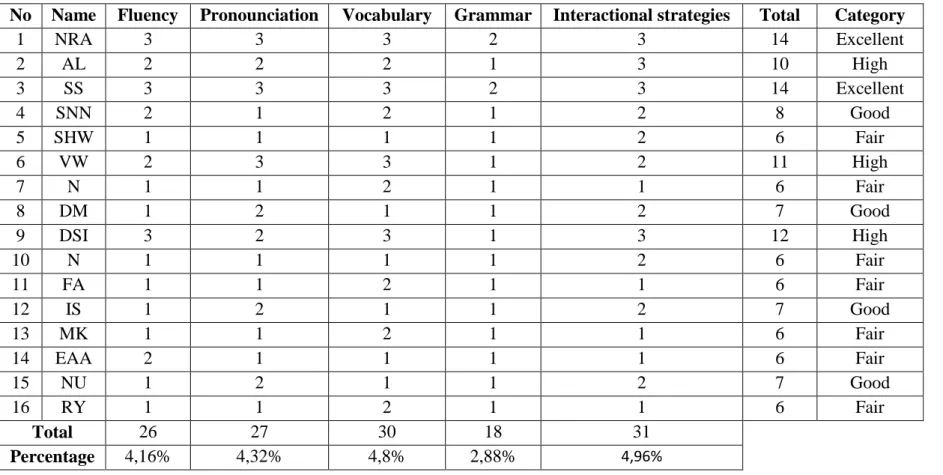AN ANALYSIS ON THE PROBLEM OF BILINGUALITY IN SPEAKING ABILITY AMONG THIRD SEMESTER STUDENTS OF ALBANIA. The main purpose of this research was to understand students' use of bilingualism in speaking ability in the third semester of English department of IAIN Metro. The characteristic of this research was qualitative descriptive. The primary data of this research was obtained from the sixteen students in the third semester of the students of the English department of IAIN Metro.
Dari data yang dianalisis, disimpulkan bahwa pada semester ketiga mahasiswa Jurusan Bahasa Inggris IAIN Metro, mahasiswa harus berlatih dalam satu hari dan banyak berbicara dengan teman-temannya dan menggunakan kosa kata untuk membantu mereka bersuara. hak berbicara. Tujuan utama dari penelitian ini adalah untuk mengetahui apakah mahasiswa menggunakan dua bahasa dalam kemampuan berbicara mereka pada semester ketiga program studi Bahasa Inggris IAIN Metro. Data primer dari penelitian ini diperoleh dari enam belas mahasiswa semester tiga program studi Bahasa Inggris IAIN Metro.
Temuan penelitian ini menunjukkan bahwa masih banyak siswa yang belum menguasai bahasa Inggris, karena siswa masih menggunakan dua bahasa, yaitu bahasa Inggris dan bahasa Indonesia dalam berbicara Penyebab siswa yang memiliki masalah belajar berbicara adalah kurangnya kosa kata, masalah memahami tata bahasa , pengucapan, perasaan takut salah dalam berbicara dan kurang belajar. Dari data yang dianalisis, disimpulkan bahwa pada mahasiswa semester tiga program studi Bahasa Inggris IAIN Metro, mahasiswa harus membiasakan berbicara bahasa Inggris dalam percakapan dengan teman mereka setiap hari dan menggunakan kamus untuk membantu mereka membantu menemukan pengucapan yang benar. kata-kata.
INTRODUCTION
Focus of the Study
Research Question
In this research, the author focuses on analyzing how the student's use of bilingualism in the speaking ability in the third semester of the English Department of IAIN Metro.
Objective and Benefits of the Study
- Definition of Speaking
- Definition of Speaking Ability
Based on all the previous research done by various researchers previously related to Analysis on the problem of bilingualism in speaking skills. Therefore, the writer will take the stand as one of the researchers who benefited from some of the previous research. Based on the description of previous research above, the author intends to conduct qualitative research on an analysis of the problem of bilingualism in speaking skills among third semester students of the English Department of IAIN Metro.
Based on the above explanation, the researcher can conclude that speaking is one of the ways to communicate with all people, which is used in teaching English. Elements of Speech are therefore very useful in helping students improve their speaking skills. Based on the above explanation, the researcher concludes that speaking ability is a special skill or competence that students must acquire in some activity.
Learners often think that the ability to speak a language is a product of language learning, but speaking is also an essential part of the language learning process. One of the advantages of spoken language is that the process of thinking as speaking allows you to show a certain number of hesitations in performance, pauses, backtracking and corrections.
The Concept of Bilingualism
- Factors Bilingualism
- Types of Bilingualism
The author decides to use qualitative research to analyze the problem of bilingualism in speaking ability among the third semester students of the English departments of IAIN Metro. In accordance with the explanation above, the purpose of this research is to know the use of bilingualism in speaking ability among the Third Semester students of the English departments of IAIN Metro. The author takes documents from the result of the use of bilingualism mastery of the students.
The researcher interviewed 16 students to collect data on bilingual ability in the speaking class of the third semester students of the English department of IAIN Metro. The total of the students in the State Institute of Islamic Studies of Metro is 8659 students. Those are the vision and missions that encompass all students of the Department of English Education in IAIN Metro.
Outcome of observational bilingualism of speaking ability among third semester English department students. In conducting the research, the writer analyzed 16 students out of 35 B grade students in the third semester of IAIN Metro English department. Terminologically, according to the result of the first question, most respondents know the pronunciation.
Most students say that grammar is an important part of speaking to make a good sentence. Based on the analysis of the data and references of the research, it is an analysis of the problem of bilingualism in students' speaking. About the problem of bilingualism in speaking ability in the third semester of IAIN Metro English Department, that some students were fluent in English, but there were some students who still used bilingualism, because the speaking ability is English and Indonesian language, it caused a lack of vocabulary.
The cause why the third semester of the English department of IAIN Metro finds the problem of bilingualism in speaking skills, because there is a lack of vocabulary and less study. LIST OF CLASS B STUDENTS IN THIRD SEMESTER STUDENTS OF THE ENGLISH DEPARTMENTS OF IAIN METRO. 2 Number of students class B the third semester Students of the English department of IAIN Metro.
RESEARCH METHOD
Data Resources
They can explain primary sources and often use them to support a specific thesis or argument or to persuade the reader to accept a particular point of view. The secondary source in this research is from interview, documentation, journals and e-books related to the research.
Data Collection Method
- Interview
- Documentation
Qualitative researchers also have a toolbox of data collection techniques, including in-depth interviewing, participant observation, and document analysis. In the process of data collection, the writer collects the results of students using bilingualism. In this research, the writer uses three techniques for data collection, namely observation, interview and documentation.
Observation is the process of openly gathering first-hand information by observing people and places at a research site.33 As a form of data collection, observation has both advantages and disadvantages. Advantages include the ability to record information as it occurs in a situation, to study actual behavior, and to study individuals who have difficulty verbalizing their ideas (eg, preschoolers). Some of the disadvantages of observations are that you will be limited to the places and situations where you can gain access, and in these places you may find it difficult to develop relationships with individuals.
Creswell, Educational Research Planning Conducting and Evaluating Quantitative and Qualitative Research (England: University of Nebraska, 2002), 53. In this research the researcher uses the guided interview from which the researcher gave some questions which the participants prepared and the researchers record the answer. The qualitative researcher may use written documents or other artifacts to understand the phenomenon under study.34 In this research, the researcher uses the document technique to collect data.
Examples of private documents are personal diaries and diaries, letters and personal notes.35 Therefore, the necessary secondary data is documented as a data source in the form of documentation. In addition, the researcher obtained the data from the students' pronunciation test score.
Data Analysis Technique
Qualitative data generally takes the form of words (descriptions, observations, impressions, recordings and the like). The researcher must organize and categorize or code the large mass of data so that it can be described and interpreted. In qualitative research, data analysis includes two aspects, the aspects consist of text analysis and involve the development of a description and themes.
The researcher would apply the Miles and Huberman model to analyze the data.36 The components of this analysis model are depicted by this figure. The display must be able to describe the content of the data. and Miles, Data Management and Analysis Methods, In N. 4) Finally, the researcher verifies his research by drawing conclusions from data findings. Therefore, it is concluded that the analysis of data has certain functions in the analysis of research data which include, to make the meaningful data, to test null hypothesis, to get the meaningful results, to describe inferences or to make generalization , and to calculate parameters.
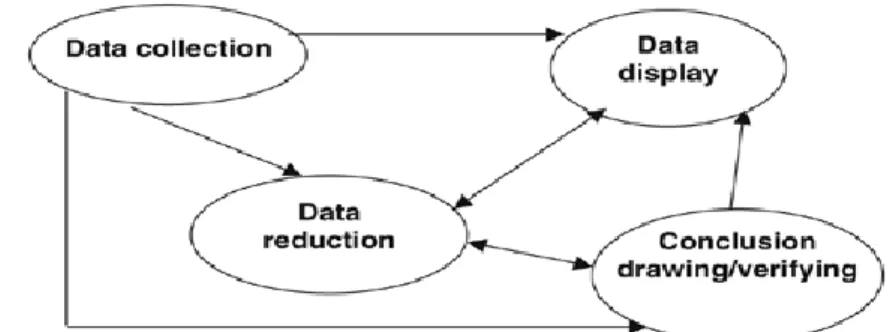
Research Approach
During or immediately after data collection, the author must make sense of the information provided by individuals in the study. In the year 1993, based on the change of the name of the capital province of lampung from Tanjung Karang to Bandar Lampung, STAIN Raden Intan Tanjung Karang was also changed to STAIN Raden Intan Bandar Lampung. Meanwhile, the result of the data analysis describes that most of the students still use bilingualism under English and Indonesian language in spoken, due to lack of vocabulary.
The way to reduce and solve the problem of bilingualism in speaking ability was for the students to study more and try to talk a lot with their friend in the class even outside the class and the students to memorize many of the vocabulary words to improve their ability to talk. also through listening to music and watching native languages and films.
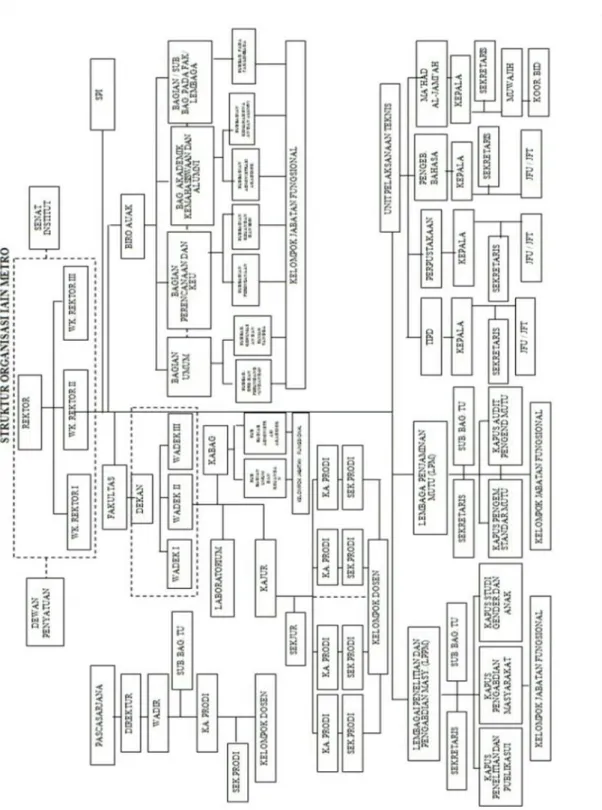
RESULT AND DISCUSSION
Data Analysis
Discussion
- Analytic Speaking Rubric
- Facilities at IAIN Metro
- Total Students State Institute for Islamic Studies of Metro
- The result score that use english language in speaking ability
- The result score that use indonesian language in speaking ability
- Analysis Components of Miles and Huberman Model
- Structural Organization of IAIN Metro
- The Location Sketch of IAIN Metro
- The Percentage of Bilingualism in Speaking Ability of Students
The students who have low vocabulary and still forgot the vocabulary are supposed to study more not only about the vocabulary you had and you have to memorize 5 words every day to add more to your vocabulary. The teacher hopes that there are the students who want to do the research on the analysis of the problem of bilingualism in speaking skills in the next opportunity. The Head of Department has conducted a number of separate programs related to the English subject, particularly to increase students' fluency.
Young Richard og Agnes Weiyun He.Talking and Tasting: Discourse Approach to the Assessment of Oral Proficiency.
